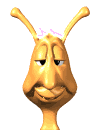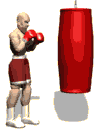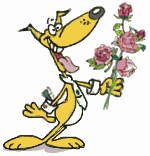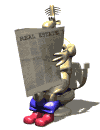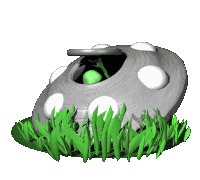
"The Personality Balance Sheet"
Copyright 1979, 1981
Somehow, a diagram of the brain just doesn't get it done,
does it?
For those unfamiliar with accounting and financial reporting, a balance sheet
means the financial position of an economic entity at given point in time. Roughly
speaking, it answers the question, "Where do we stand?". More precisely it is
the historical summary, for a given economic entity of assets, liabilities, and
owner's equity. In the same manner, each person can ask the same question,
"Where do I stand?".
Each individual is constantly changing with each day. There are always new
circumstances, changes, environments, social changes, new demands, and just
growing older. To say that we never change would indicate a lack of learning
and assuming a normal person, we never stop learning, therefore, today we are
not the same as we were yesterday. It is one thing to think we know our weak
and strong points, just as a businessman thinks he knows what his inventory is,
he still takes a physical inventory at least once or twice a year to verify that what
he thought is indeed the facts. Sometimes he is right and sometimes he is
wrong. In either case, he can be relieved to the knowledge of "where he stands"
at that moment.
Our personality contains assets, liabilities, and equity. Our assets might be
natural, such as a strong body, youth, a quick mind, good looks, and other
qualities that enable us to cope with life. On the other hand, we might have
liabilities such as a weak body, age, slow of mind, ugly, and others that tend to
keep us on the sidelines of life. Our equity, like a business entity, is how much
we have invested into our lives such as attitudes, personal drive, and how
much we retain from our learning experience.
The primary purpose in this test is to aid in understanding of an individual's
personality under different situations. This is the overall pattern, or integration, of
his or her structures, modes of behavior, interests, attitudes, intellectual
abilities, aptitudes, and many other distinguishable characteristics. It refers then
to the whole person.
What is a normal personality? What is an abnormal personality? The words
"normal" and "abnormal" have different meanings for different people. From the
so-called normative view, anybody who is different from the one making the
judgement is abnormal. From the statistical view, anybody is abnormal that
diverges very much from the average. From the social view-point, the normal
person is the one that is adjusted to his environment to such an extent that he
finds life enjoyable, and the abnormal is the one that finds life intolerable. Is the
personality fixed in concrete and unchangeable? The simple no is no. However,
this so-called simple answer depends largely upon the attitude of the individual
and various other factors such as change in interest, health, age, physical
needs, social pressures, etc.
As we study the personality styles given in this test, the first one that we have
named as "UN-SURE" (Sometimes called the parent ‘id’) is directly effected by
social environment or the rules of social behavior. These rules constantly
change over an individual's lifetime and the overall effect of these changes will
be determined largely by the individual's acceptance of these changes.
The next style, the so-called "COMFORT ZONE" (sometimes called super-ego) is
directly effected by the limitations of the individual's physical and mental
structure. Obviously the individual with health will have different interest than
the person without. Age will effect our interest levels as no other single factor. In
addition, obtaining and holding will motivate the interest level on to certain
physical needs such as food, clothing and shelter. When these obvious physical
needs are taken away, all other motivational factors become insignificant.
Our acceptance or rejection of will again directly effect the “STRESS”
(Sometimes referred to as our negative personality) style given situations and
our ability to do sometime about changing the conditions causing the stress. We
can not escape stress. Any change to our normal daily routine can bring about a
certain amount of stress. Our ability to cope with the stress and the amount of
negativity to our overall personality will be deter-mined largely by our
understanding of our personal weakness and strengths.
Explanation of Styles
UNSURE:
This personality style is the behavior patterns given to us primarily by our
parents. We learn "what is expected", "how we should behave", "how we
should react", and this is enforced by the models we encounter every day as
children an even later as adults are. These models can be people, various
reading materials, personal experiences of "what works" and "what doesn't”,
even from past mistakes. We watch our models and we react as they react. Just
as we learn to talk, walk, eat, dress, we are told by our models how we "should"
behave.
COMFORT:
Just when this personality style developed is not known for certain. There are
those that promote the idea that the personality is formed by the age of five or
six. Still others say "the first six months", and others might say while still in the
womb. Regardless of when, it exists for all of us. This is developed from
personal interest and again, personal aptitude, ability and skill will play an
important part in its formulation.
When our physical needs are met, we like to operate in this personality style. We
will remain in this particular style as long as our physical needs and interest are
being met. Inter-est and needs are sometimes confused. An interest can become
a need when that interest is strong enough to throw us into stress if it is not
being met. An example is the person that likes to deal with people. If that
person's interest level is strong enough and they are put into a situation when
they can't communicate, talk, promote, and sell their ideals, they can move out of
the comfort zone into stress quite easily.
STRESS:
We enter into this style of personality when under pressure. This does not mean
the external critical circumstances of a situation alone, Longer hours,
unexpected problems, a sud-den change of conditions does not in themselves
necessarily constitute a pressure situation. What causes the pressure is not the
situation itself but rather the fact that a certain event, occurrence or conditions
hinders the fulfillment of ones basic needs. As we have explained, these needs
are not just physical rather they can be strong interest. An example is a person
that enjoys dealing with people finding themselves in a position where people
interface is absence continuously. Or the reverse situation where the person that
doesn't like to deal with people being forced into a position of having to deal with
people.
CONTINUUM:
Most tests such as this are designed to test the individual as "introverts" or
"extroverts". This technique originated by the psychiatrist Carl lung. He
described the introvert and reacting negatively to situations or as tending to
withdraw from them. The introvert is also characterized as inwardly reflective.
The extrovert, on the other hand, reacts positively. He is outwardly expressive,
tending to be talkative and active-in social contacts. This method is the theory of
"dichotomy". We have found, however, that the individual personality change
depending upon given situations and the “normal” distribution is balanced with
gradations between. This suggests, quite properly, that introversion-extroversion
is a "continuum" and' not a dichotomy. When the answers given by the individual
are balanced between introversion and extroversion, we call these individual
personalities "ambiverts". There is thus no justification for saying everyone is
either an introvert or extrovert. These are extremes of the normal distribution.
There are of course, select groups that will give predominantly introvert and
extrovert reactions. Among these are the mentally ill, those with schizophrenia
tend to be strongly introverted while those with manic-depression psychosis
tend to be strongly extroverted. (Neymann, C.A.and G.K Yacorzynski) This does
not mean, however, that introverts are inclined to be schizophrenics and
extroverts manic-depressive. However, the usual and most desirable tendency
is ambiversion.
Explanation of Colors:
We have chosen colors to describe the quadrants of each personality style. In
many personality tests, we see the person as being described in a one
dimension or personality style. As we can easily see, a personality is complex
because people are complex. A personality is many dimensions and we don't
stay in any given style "all" the time. For this reason, the personality is presented
in each style a color combination.
RED: (Directing) This color represents the personality that is strong, definite,
authoritative person who gets fulfillment of his needs to get results by quick,
precise, definite, decisive action. This person is highly results oriented. His life
is fulfilled as he sees tangible reward of his labor. He organizes, drives, works
hard on specific tasks and usually has little patience with the more reflective
person.
YELLOW: (Organizing) this color represents the personality style that prefers to
get results with people. They like to communicate, to persuade, to sell, to serve,
to relate, to teach, to convince. It is a life style that insists on opportunities to
directly relate to people and work with them. They are the group and social-
minded personality individuals and are not usually known for self-interest.
BLUE: (Planning) this color represents the personality that likes to get results
with innovations. They like to think, project, plan, and conceptualize. They are
categorized by a desire to be non- competitive and think through the many
possibilities of arriving at results. These people are usually deeply committed to
whatever they happen to be involved in. They feel a deep sense of purpose; they
identify with causes and purposes. When they are disappointed in a relationship,
in an individual, in lack of dedication on the part of others, they tend to take this
very seriously and experience strong inner tensions.
GREEN: (Controlling) this color represents the personality style that likes to get
results with systems and procedures. They like to schedule, arrange, and
regulate, to methodize, to standardize as the primary way of getting things done.
Plans and procedures and certainty of schedules and systems are essential
tools for fulfillment of life purpose.
Color Combinations:
In every style of personality, you will usually find two predominate colors
combinations. Presented below are just a few of the more common combinations
and how they relate to one another:
RED/YELLOW: Make up the so-called extroverts and indicate a personality that
likes competition and challenging work and to accomplish the tasks with the
backing and support of other people that includes direct action and authority.
Occupations: Sales, Politician, or Coach.
GREEN/BLUE: Make up the so-called introverts and indicate a personality that
prefers to get results with systems and procedures without direct authority. It
prefers personal freedom, innovation from direct authority. In other words, this
personality accepts the system but will attempt to improve on it. This personality
does not desire direct personal relationship, debate, and will accept and needs
indirect authority to accomplish tasks. Occupation: Programmers, Clerical, or
Artist.
RED/GREEN: Indicates a personality that has a need to get the job done by the
system. This personality indicates little interest in being social or group minded
unless being so will aid in accomplishing the task at hand. Planning could be a
weak point. This individual will prefer to use the available system or procedures
to get the task done. Occupations: Engineers, Accountants, or Lawyers.
RED/BLUE: Indicates a personality that would prefer to "think", "plan" the best
way to accomplish a goal then take direct action to get the task done. Group or
social pressures usually mean little or nothing. This is the entrepreneur.
Occupation: Businessman, researcher, or writer.
YELLOW/BLUE: Indicates a personality that enjoys thinking, planning, creativity
and communication of concepts and ideals to others. They are concerned with
making requirements known in direct, 'face-to-face' manner. Occupations:
Teachers, Counselors, or Ministers.
YELLOW/GREEN: Very rare combination simply because they diametrically
oppose one another in interest. This personality will usually react in one of two
ways: 1. Attempting to change the system to meet group needs or 2. Attempting to
control group and social needs by the established system and procedures.
Arguments are usually based upon facts with little or no emotion. Occupations:
Lawyers, Diplomats, or Negotiators
Copyright 1979, 1981
Somehow, a diagram of the brain just doesn't get it done,
does it?
For those unfamiliar with accounting and financial reporting, a balance sheet
means the financial position of an economic entity at given point in time. Roughly
speaking, it answers the question, "Where do we stand?". More precisely it is
the historical summary, for a given economic entity of assets, liabilities, and
owner's equity. In the same manner, each person can ask the same question,
"Where do I stand?".
Each individual is constantly changing with each day. There are always new
circumstances, changes, environments, social changes, new demands, and just
growing older. To say that we never change would indicate a lack of learning
and assuming a normal person, we never stop learning, therefore, today we are
not the same as we were yesterday. It is one thing to think we know our weak
and strong points, just as a businessman thinks he knows what his inventory is,
he still takes a physical inventory at least once or twice a year to verify that what
he thought is indeed the facts. Sometimes he is right and sometimes he is
wrong. In either case, he can be relieved to the knowledge of "where he stands"
at that moment.
Our personality contains assets, liabilities, and equity. Our assets might be
natural, such as a strong body, youth, a quick mind, good looks, and other
qualities that enable us to cope with life. On the other hand, we might have
liabilities such as a weak body, age, slow of mind, ugly, and others that tend to
keep us on the sidelines of life. Our equity, like a business entity, is how much
we have invested into our lives such as attitudes, personal drive, and how
much we retain from our learning experience.
The primary purpose in this test is to aid in understanding of an individual's
personality under different situations. This is the overall pattern, or integration, of
his or her structures, modes of behavior, interests, attitudes, intellectual
abilities, aptitudes, and many other distinguishable characteristics. It refers then
to the whole person.
What is a normal personality? What is an abnormal personality? The words
"normal" and "abnormal" have different meanings for different people. From the
so-called normative view, anybody who is different from the one making the
judgement is abnormal. From the statistical view, anybody is abnormal that
diverges very much from the average. From the social view-point, the normal
person is the one that is adjusted to his environment to such an extent that he
finds life enjoyable, and the abnormal is the one that finds life intolerable. Is the
personality fixed in concrete and unchangeable? The simple no is no. However,
this so-called simple answer depends largely upon the attitude of the individual
and various other factors such as change in interest, health, age, physical
needs, social pressures, etc.
As we study the personality styles given in this test, the first one that we have
named as "UN-SURE" (Sometimes called the parent ‘id’) is directly effected by
social environment or the rules of social behavior. These rules constantly
change over an individual's lifetime and the overall effect of these changes will
be determined largely by the individual's acceptance of these changes.
The next style, the so-called "COMFORT ZONE" (sometimes called super-ego) is
directly effected by the limitations of the individual's physical and mental
structure. Obviously the individual with health will have different interest than
the person without. Age will effect our interest levels as no other single factor. In
addition, obtaining and holding will motivate the interest level on to certain
physical needs such as food, clothing and shelter. When these obvious physical
needs are taken away, all other motivational factors become insignificant.
Our acceptance or rejection of will again directly effect the “STRESS”
(Sometimes referred to as our negative personality) style given situations and
our ability to do sometime about changing the conditions causing the stress. We
can not escape stress. Any change to our normal daily routine can bring about a
certain amount of stress. Our ability to cope with the stress and the amount of
negativity to our overall personality will be deter-mined largely by our
understanding of our personal weakness and strengths.
Explanation of Styles
UNSURE:
This personality style is the behavior patterns given to us primarily by our
parents. We learn "what is expected", "how we should behave", "how we
should react", and this is enforced by the models we encounter every day as
children an even later as adults are. These models can be people, various
reading materials, personal experiences of "what works" and "what doesn't”,
even from past mistakes. We watch our models and we react as they react. Just
as we learn to talk, walk, eat, dress, we are told by our models how we "should"
behave.
COMFORT:
Just when this personality style developed is not known for certain. There are
those that promote the idea that the personality is formed by the age of five or
six. Still others say "the first six months", and others might say while still in the
womb. Regardless of when, it exists for all of us. This is developed from
personal interest and again, personal aptitude, ability and skill will play an
important part in its formulation.
When our physical needs are met, we like to operate in this personality style. We
will remain in this particular style as long as our physical needs and interest are
being met. Inter-est and needs are sometimes confused. An interest can become
a need when that interest is strong enough to throw us into stress if it is not
being met. An example is the person that likes to deal with people. If that
person's interest level is strong enough and they are put into a situation when
they can't communicate, talk, promote, and sell their ideals, they can move out of
the comfort zone into stress quite easily.
STRESS:
We enter into this style of personality when under pressure. This does not mean
the external critical circumstances of a situation alone, Longer hours,
unexpected problems, a sud-den change of conditions does not in themselves
necessarily constitute a pressure situation. What causes the pressure is not the
situation itself but rather the fact that a certain event, occurrence or conditions
hinders the fulfillment of ones basic needs. As we have explained, these needs
are not just physical rather they can be strong interest. An example is a person
that enjoys dealing with people finding themselves in a position where people
interface is absence continuously. Or the reverse situation where the person that
doesn't like to deal with people being forced into a position of having to deal with
people.
CONTINUUM:
Most tests such as this are designed to test the individual as "introverts" or
"extroverts". This technique originated by the psychiatrist Carl lung. He
described the introvert and reacting negatively to situations or as tending to
withdraw from them. The introvert is also characterized as inwardly reflective.
The extrovert, on the other hand, reacts positively. He is outwardly expressive,
tending to be talkative and active-in social contacts. This method is the theory of
"dichotomy". We have found, however, that the individual personality change
depending upon given situations and the “normal” distribution is balanced with
gradations between. This suggests, quite properly, that introversion-extroversion
is a "continuum" and' not a dichotomy. When the answers given by the individual
are balanced between introversion and extroversion, we call these individual
personalities "ambiverts". There is thus no justification for saying everyone is
either an introvert or extrovert. These are extremes of the normal distribution.
There are of course, select groups that will give predominantly introvert and
extrovert reactions. Among these are the mentally ill, those with schizophrenia
tend to be strongly introverted while those with manic-depression psychosis
tend to be strongly extroverted. (Neymann, C.A.and G.K Yacorzynski) This does
not mean, however, that introverts are inclined to be schizophrenics and
extroverts manic-depressive. However, the usual and most desirable tendency
is ambiversion.
Explanation of Colors:
We have chosen colors to describe the quadrants of each personality style. In
many personality tests, we see the person as being described in a one
dimension or personality style. As we can easily see, a personality is complex
because people are complex. A personality is many dimensions and we don't
stay in any given style "all" the time. For this reason, the personality is presented
in each style a color combination.
RED: (Directing) This color represents the personality that is strong, definite,
authoritative person who gets fulfillment of his needs to get results by quick,
precise, definite, decisive action. This person is highly results oriented. His life
is fulfilled as he sees tangible reward of his labor. He organizes, drives, works
hard on specific tasks and usually has little patience with the more reflective
person.
YELLOW: (Organizing) this color represents the personality style that prefers to
get results with people. They like to communicate, to persuade, to sell, to serve,
to relate, to teach, to convince. It is a life style that insists on opportunities to
directly relate to people and work with them. They are the group and social-
minded personality individuals and are not usually known for self-interest.
BLUE: (Planning) this color represents the personality that likes to get results
with innovations. They like to think, project, plan, and conceptualize. They are
categorized by a desire to be non- competitive and think through the many
possibilities of arriving at results. These people are usually deeply committed to
whatever they happen to be involved in. They feel a deep sense of purpose; they
identify with causes and purposes. When they are disappointed in a relationship,
in an individual, in lack of dedication on the part of others, they tend to take this
very seriously and experience strong inner tensions.
GREEN: (Controlling) this color represents the personality style that likes to get
results with systems and procedures. They like to schedule, arrange, and
regulate, to methodize, to standardize as the primary way of getting things done.
Plans and procedures and certainty of schedules and systems are essential
tools for fulfillment of life purpose.
Color Combinations:
In every style of personality, you will usually find two predominate colors
combinations. Presented below are just a few of the more common combinations
and how they relate to one another:
RED/YELLOW: Make up the so-called extroverts and indicate a personality that
likes competition and challenging work and to accomplish the tasks with the
backing and support of other people that includes direct action and authority.
Occupations: Sales, Politician, or Coach.
GREEN/BLUE: Make up the so-called introverts and indicate a personality that
prefers to get results with systems and procedures without direct authority. It
prefers personal freedom, innovation from direct authority. In other words, this
personality accepts the system but will attempt to improve on it. This personality
does not desire direct personal relationship, debate, and will accept and needs
indirect authority to accomplish tasks. Occupation: Programmers, Clerical, or
Artist.
RED/GREEN: Indicates a personality that has a need to get the job done by the
system. This personality indicates little interest in being social or group minded
unless being so will aid in accomplishing the task at hand. Planning could be a
weak point. This individual will prefer to use the available system or procedures
to get the task done. Occupations: Engineers, Accountants, or Lawyers.
RED/BLUE: Indicates a personality that would prefer to "think", "plan" the best
way to accomplish a goal then take direct action to get the task done. Group or
social pressures usually mean little or nothing. This is the entrepreneur.
Occupation: Businessman, researcher, or writer.
YELLOW/BLUE: Indicates a personality that enjoys thinking, planning, creativity
and communication of concepts and ideals to others. They are concerned with
making requirements known in direct, 'face-to-face' manner. Occupations:
Teachers, Counselors, or Ministers.
YELLOW/GREEN: Very rare combination simply because they diametrically
oppose one another in interest. This personality will usually react in one of two
ways: 1. Attempting to change the system to meet group needs or 2. Attempting to
control group and social needs by the established system and procedures.
Arguments are usually based upon facts with little or no emotion. Occupations:
Lawyers, Diplomats, or Negotiators
Understanding the Human Personality


